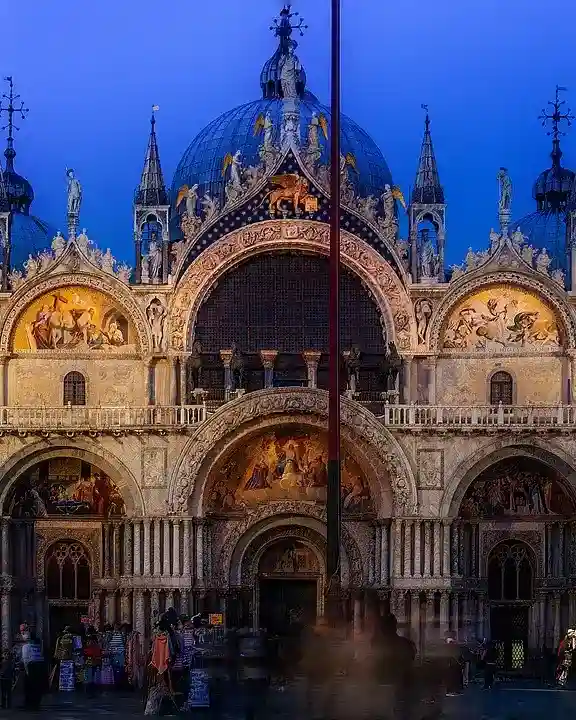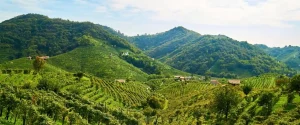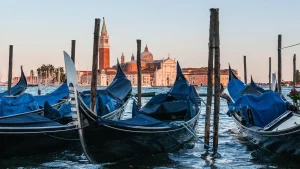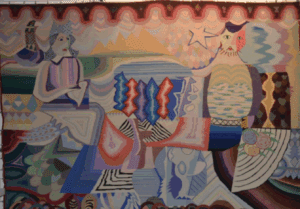The Winged Lion of St. Mark: Venice’s Most Powerful Symbol
Walk through Venice, and one image keeps appearing — above arches, palaces, bridges, and gates. A majestic lion with wings, sometimes holding a book, sometimes a sword, watching silently over the city. It’s on flags, mosaics, marble façades, and even gondola ornaments. This is the Lion of St. Mark, the official symbol of Venice — and the key to understanding the soul of La Serenissima.
Because this is no ordinary lion. It’s part saint, part legend, and entirely Venetian — representing a city that saw itself as both divinely chosen and worldly powerful. To understand why Venice adopted a winged lion as its symbol, you have to understand what the city believed about itself: that it was blessed, just, and destined to rule the seas.
1️⃣ The Winged Lion: Venice’s Eternal Emblem
The official symbol of Venice is the Lion of St. Mark (Leone di San Marco in Italian) — a lion with wings, often holding a book or a sword. You’ll find it everywhere in the city:
- Above the Doge’s Palace, carved into marble façades
- On the flag of the Republic of Venice — still flying today
- In the mosaics of St. Mark’s Basilica
- Guarding the gates of the Arsenale
- Decorating bridges, coins, gondola ornaments, and even shop signs
For more than a thousand years, this lion has represented faith, justice, and power. And unlike many city emblems, it was not born from myth or legend — but from the deep religious devotion and political ambition that built the Venetian Republic.
2️⃣ Why a Lion? The Connection to St. Mark
Venice’s lion represents St. Mark the Evangelist, the city’s patron saint. In early Christianity, each of the four Evangelists — Matthew, Mark, Luke, and John — was associated with a symbolic creature. St. Mark’s was the winged lion, symbolizing courage, resurrection, and divine authority.
When Venetian merchants brought the relics of St. Mark from Alexandria to Venice in 828 AD (yes, smuggled under layers of pork to avoid Muslim inspection — a very Venetian move), the city claimed him as its protector. Overnight, St. Mark became the heart of Venetian identity — and his lion became the Republic’s emblem.
The message was clear: Venice was under divine protection.
3️⃣ The Famous Legend: “Pax Tibi, Marce, Evangelista Meus”
Look closely at the lion’s open book, and you’ll often see a Latin phrase inscribed:
“Pax tibi, Marce, evangelista meus.”
(“Peace be with you, Mark, my evangelist.”)
According to legend, when St. Mark passed through the Venetian lagoon, an angel appeared and spoke these words — predicting that one day his body would rest there. The prophecy was fulfilled when his remains were brought to Venice, and the phrase became sacred to Venetians.
For centuries, the words on that book symbolized not just peace, but divine legitimacy. Venice wasn’t just another city — it was chosen. The lion, standing tall with its wings spread, became a heavenly endorsement of Venetian destiny.
4️⃣ From Faith to Empire: The Lion as Political Symbol
As Venice rose from a lagoon refuge to a global maritime superpower, the lion evolved from saintly symbol to imperial banner. From the 9th century until Napoleon’s invasion in 1797, the Republic of Venice ruled with the lion at its side — literally.
Every ship that left the Venetian Arsenal carried a flag with the lion. Every conquered city — from Crete to Cyprus, from Dalmatia to Corfu — was marked with the same proud emblem. Even today, carved lions still stand on fortress gates across the eastern Mediterranean, reminders of the Republic’s reach.
Where the lion roared, Venice ruled.
5️⃣ Open Book vs. Closed Book: Peace or Power?
Venice’s lions come in two forms — and the difference tells you everything about the Republic’s mood at the time.
- Open Book: Represents peace, diplomacy, and stability. You’ll see it across Venice itself — in St. Mark’s Square, on civic buildings, and on the flag — always inscribed with “Pax tibi, Marce…”
- Closed Book or Sword: Represents war, vigilance, and strength. This version appeared on fortresses, military banners, and frontier towns conquered by the Republic.
Even in art, Venice’s lion could be both serene and fierce — just like the city itself: peaceful when possible, powerful when necessary.
6️⃣ Where to Find the Lion of Venice Today
If you start counting, you’ll lose track — the lion appears in hundreds of places. But here are the most iconic:
- St. Mark’s Square: The bronze Lion of Venice statue atop the granite column — one of the city’s most recognizable landmarks.
- Doge’s Palace: Look above the central balcony — a marble lion gazes down on visitors as if guarding the city’s honor.
- St. Mark’s Basilica: Golden mosaics glitter with lions — reminders of the saint resting inside.
- Arsenale: Two massive marble lions guard the entrance, trophies from Venice’s conquests in Greece.
- Flags & Gondolas: The Venetian flag, fluttering red and gold, still bears the lion. Some gondolas carry tiny brass lions on their sterns — subtle nods to pride and tradition.
🏛️ Visit the Doge’s Palace and St. Mark’s Basilica with a Private Guide →
7️⃣ The Lion vs. Other Venetian Icons
Venice is full of symbols — each telling a different story:
- 🎭 The Carnival Mask: Freedom and mystery.
- 🚣 The Gondola: Craftsmanship and elegance.
- 🌉 The Rialto Bridge: Commerce and connection.
But only the lion bridges all worlds — faith, politics, and identity. It is the one image that truly unites every Venetian story, from saint to sailor, Doge to gondolier.
8️⃣ The Lion in Venetian Art and Architecture
From the Middle Ages to the Renaissance, the lion became a cornerstone of Venetian art. Painters like Carpaccio and Bellini filled their canvases with lions beside St. Mark. Sculptors carved them into palaces, arches, and bridges. Even the city’s currency — the golden ducat — bore the winged lion as a sign of Venice’s power.
Today, the lion still appears in modern life — on the logo of Venice’s airport (Marco Polo), banks, and cultural institutions. What began as a religious symbol has become a timeless brand — Venice’s signature across the centuries.
9️⃣ Decoding the Symbolism
Every detail of the Winged Lion of St. Mark carries meaning:
- 🦁 The Lion: Strength, courage, and justice.
- 🕊️ The Wings: Divine inspiration — the Evangelist’s spirit rising above earth.
- 📖 The Book: Knowledge, peace, and the rule of law.
- ⚔️ The Sword (sometimes): Authority, vigilance, and the Republic’s power to defend itself.
Together, they create a perfect portrait of Venice — both spiritual and sovereign, both humble before God and formidable before the world.
🔱 10. How the Lion Defined Venice’s Identity
The Lion of St. Mark wasn’t just a religious emblem — it was a psychological one. It reminded Venetians who they were and what they believed in.
- It united religion and politics under one sacred image.
- It symbolized Venice’s divine right to trade, govern, and expand.
- It served as a warning to rivals and a source of pride for citizens.
- And it traveled across the world — on ships, coins, and documents — wherever Venetian merchants went.
Even after the fall of the Republic in 1797, the lion remained — proudly carved on every wall, reminding future generations that Venice might lose its empire, but never its soul.
📜 11. Fun Facts About the Lion of Venice
- The bronze lion on St. Mark’s column is possibly a repurposed Greek statue from 2,000 years ago — the Venetians simply gave it wings!
- After Venice fell, some conquered cities defaced their lions in rebellion — a symbolic “slaying” of the old Republic.
- Every April 25th — St. Mark’s Day — Venetians celebrate their patron saint with processions, flags, and, of course, lions everywhere.
- Some legends claim that during storms, locals still hear the lion’s roar echoing across the lagoon — the spirit of St. Mark guarding his city.
🏛️ 12. Why the Symbol Still Matters Today
To modern Venetians, the lion isn’t just history — it’s identity. You’ll see it on the official city flag, in local art, and even on sports jerseys. It’s a reminder that, even as tides rise and tourism swells, Venice remains proud, resilient, and faithful to its origins.
The lion’s gaze — eternal, watchful — is Venice’s mirror. It reflects a city that refuses to bow, even when the sea rises around it.
For travelers, learning about the lion turns every walk into discovery. Suddenly, the carvings above a doorway, the flags flapping from a vaporetto, or the ironwork on a gondola all start to tell the same story — of faith, freedom, and beauty born from the sea.
👣 13. Discover the Lion with a Local Guide
Most visitors photograph the lion without realizing its meaning. But when you explore Venice with a licensed local guide from Tour Leader Venice, you’ll see the city through new eyes.
We’ll show you:
- The hidden lions tucked into quiet courtyards and alleys.
- The difference between lions of peace and lions of war.
- The secret history of St. Mark’s relics — and how they changed Venice forever.
You’ll understand why the lion doesn’t just decorate Venice — it defines it.
🦁 Explore Venice Off the Beaten Path — See the City Through Its Symbols →
🏁 Conclusion — The Soul of Venice, Carved in Stone and Sky
So, what is the symbol of Venice, and why does it matter?
The answer lies in the Winged Lion of St. Mark — chosen when Venice embraced its patron saint in the 9th century, and still roaring across its skyline today. It represents faith, justice, courage, and identity. It was the seal of the Republic, the guardian of the lagoon, and the icon of a city that believed it was eternal.
To see the lion is to see Venice itself — proud, spiritual, and luminous. It reminds us that even in a world that changes with every tide, some symbols never fade.
✨ Discover the Spirit of Venice with a Private Tour →
❓ FAQs — The Winged Lion of St. Mark
FAQ 1 — Where can I see the Winged Lion of St. Mark in Venice?
Where can I see the Winged Lion of St. Mark in Venice?
You’ll find it everywhere — from the bronze lion on the column in St. Mark’s Square to marble carvings on the Doge’s Palace and Arsenale gates. For a deeper look, join a private Doge’s Palace and St. Mark’s Basilica tour to learn the story behind every symbol.
What does the open book on the Venetian lion mean?
The open book — engraved with “Pax tibi Marce Evangelista meus” — represents peace and divine blessing. When the lion holds a closed book or a sword, it symbolizes power and readiness for war — a perfect reflection of Venice’s balance between faith and strength.
Why did Venice choose St. Mark as its patron saint?
In 828 AD, Venetian merchants brought St. Mark’s relics from Alexandria, fulfilling a prophecy that his spirit would rest in the lagoon. The city adopted him as its protector, and his winged lion became the Republic’s eternal emblem — a symbol of Venice’s divine mission and independence.







